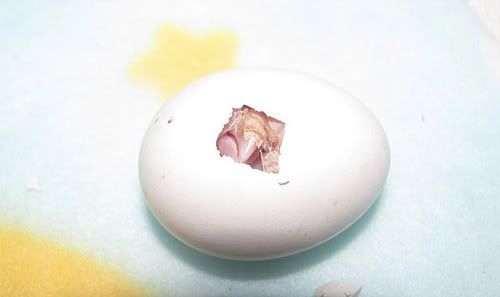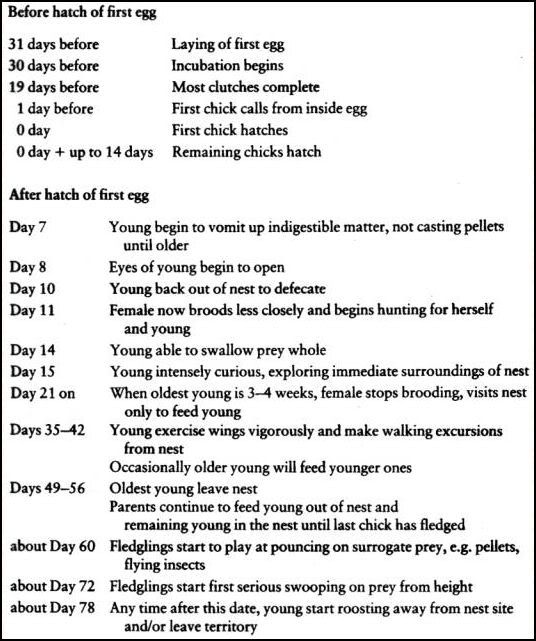
Barn owls do not construct nests; they simply lay their eggs in a small depression scraped
in loose substrate. The regurgitated pellets will form a layer of soft bedding for the eggs and young.
Barn owls may lay up to 11 eggs, but normally four to seven eggs. The
female begins incubation when the first egg is laid, unlike most other birds, which delay incubation until all the eggs are laid to cause simultaneous hatching. Barn owls lay subsequent eggs every two or three days.
Eggs hatch after 29 to 32 days of incubation.
 Every 2 to 3 days a new egg hatches. Male Barn owls are kept extremely busy bringing food to incubating females. The first owlet hatched may be 6 to 18 days older than its youngest nest mate. By the time the last egg hatches, the oldest chick may be two weeks old. A newly hatched barn owl chick will only weigh about 20 grams or 3/4 ounce.
Every 2 to 3 days a new egg hatches. Male Barn owls are kept extremely busy bringing food to incubating females. The first owlet hatched may be 6 to 18 days older than its youngest nest mate. By the time the last egg hatches, the oldest chick may be two weeks old. A newly hatched barn owl chick will only weigh about 20 grams or 3/4 ounce.The eyes are closed and its body is covered with a thin coat of down. It depends completely on its mother for warmth, food and protection for the first two weeks after hatching.
They grow rapidly and at about two weeks their eyes are open and they are covered with a heavier coat of down. At about 17 days of age the barn owl chicks are standing and walking around on feather-covered legs.


It takes both parents hunting to keep the growing youngsters fed at this point. At about 4 weeks of age the owlets are becoming active and jumping on live mice the parents bring to the nest. They start grooming their newly growing feathers with their beaks.
By day 35 to 40, the young owls are adult weight and have have enormous appetites.
By day 35 to 40, the young owls are adult weight and have have enormous appetites.
Young owls fledge when they are about eight weeks old.
The male owl continues to feed them and teach them how to hunt. The female may have started a second clutch of eggs at this point.
The male owl continues to feed them and teach them how to hunt. The female may have started a second clutch of eggs at this point.
